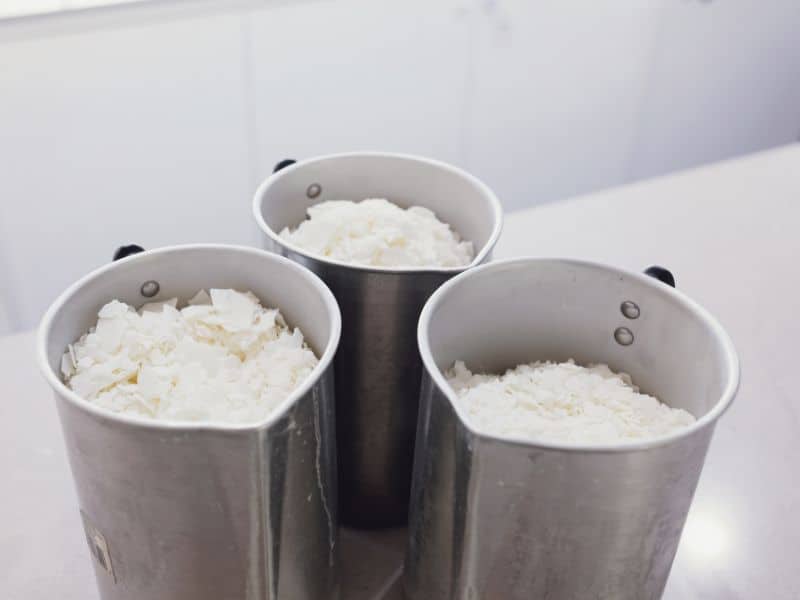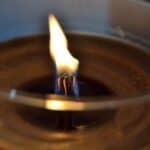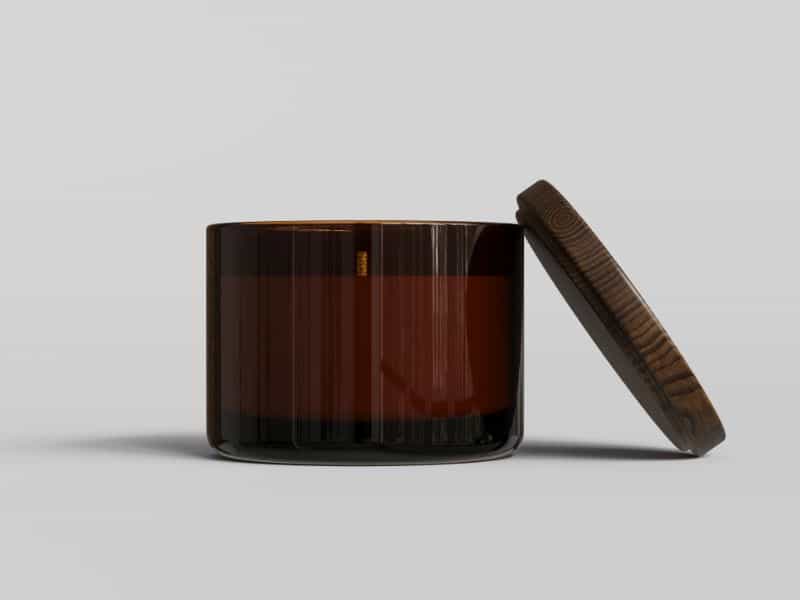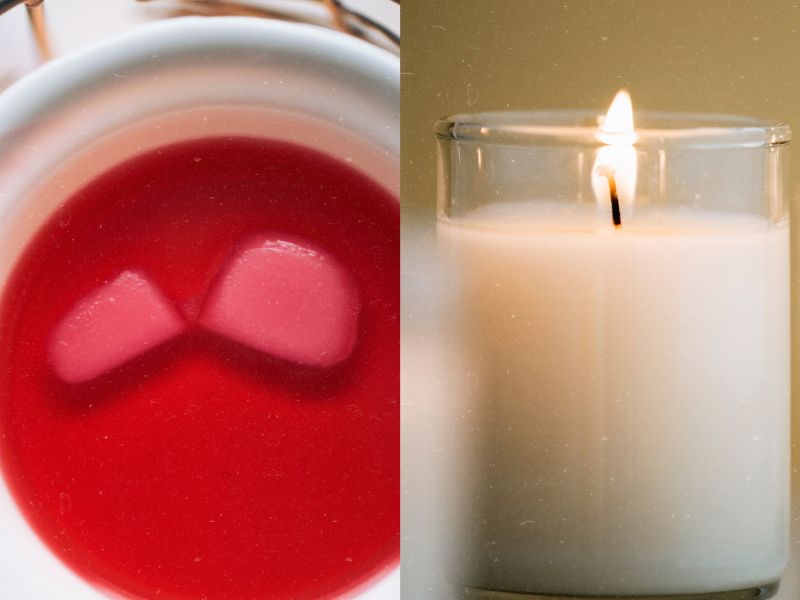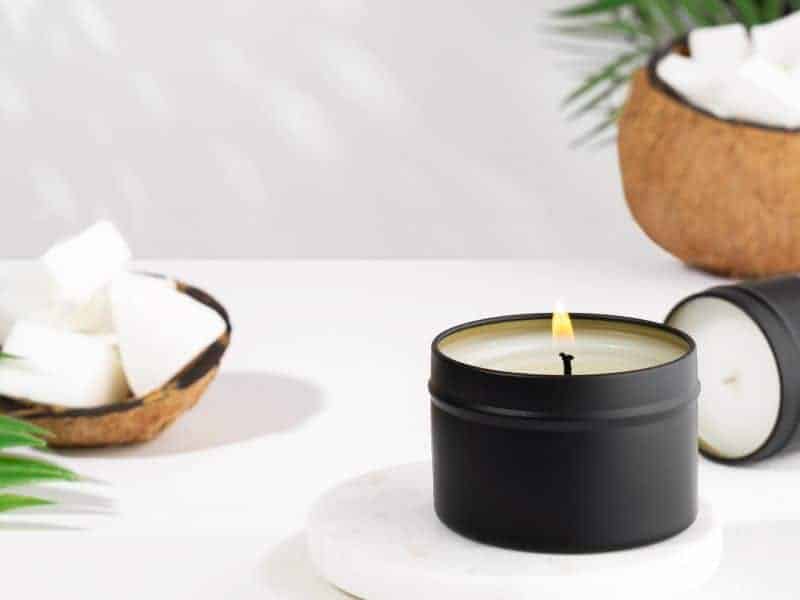Have you ever wondered what temperature candle wax melts? Whether you’re a candle enthusiast or just curious, the answer might surprise you. Candle wax is actually composed of many different types of materials that all react differently to heat. In this blog post, we will explore the various melting points for common types of candle wax and how they affect your candles.
Candle wax melts at between 80°F and 180°F (27°C-82°C). The approximate temperature depends on the type of wax and its additives. Wax for container candles melts on the lower end of the range and wax for pillar candles melts on the higher end of the range.
The melting point of candle wax can vary depending on the type of wax. Soy wax, which is a popular choice for homemade candles, has a lower melting point compared to paraffin wax. Beeswax, on the other hand, has a higher melting point than other types of wax. Let’s take a closer look.
Candle Wax Melting Points for Different Types of Wax
Different types of wax have different melting points.
- Paraffin wax: 115-145°F (46-63°C)
- Soy wax: 115-125°F (46-52°C)
- Beeswax: 145-165°F (63-74°C)
- Coconut wax: 80-120°F (49-54°C)
- Palm wax: 170-187°F (77-86°C)
By knowing the appropriate temperature for each type of wax, you can ensure that your candles melt evenly and burn properly without causing any potential hazards.
Factors Affecting Candle Wax Melting Point
The melting point of candle wax depends on various factors. The type of wax used in the candle-making process determines its melting point. In addition, additives like dyes or essential oils can influence the melting point. Coloring agents, fragrances, and oils can lower the melting point of the wax. Conversely, moisture-resistant waxes can raise the melting point of a candle wax blend.
Types of Wax
The melting point of candle wax varies depending on its type. For example, paraffin wax typically has a melting point range between 115-145°F while beeswax melts at 145-165°F. Soy wax, on the other hand, melts at a lower temperature, usually between 115-125°F.
It’s important to keep in mind that the melting point of wax can also be affected by additives and colors used in the candle-making process. Candles with higher levels of fragrance oils may have a slightly lower melting point. Additionally, environmental factors such as humidity and air temperature can also affect the melting point of the wax.
Additives
The melting point of candle wax can be influenced by any additives that have been added. Additives such as coloring agents, fragrances, and oils can lower the melting point of the wax. On the other hand, moisture-resistant waxes can raise the melting point of the candle wax. The temperature at which candle wax melts can vary widely depending on these ingredients.
Tips for Testing Candle Wax Melting Point
To test the melting point of candle wax, it is essential to use a thermometer to measure the temperature accurately. Place the wax in a suitable-sized container for precise measurements. Ensure that you heat the wax on a stable surface with proper ventilation to avoid any accidents.
It is crucial to monitor the wax closely to avoid burning or over-melting it. Overheating can cause the wax to become discolored and reduce its quality. It is necessary to maintain the temperature below the smoke point of the wax while keeping a close eye on it so that you can achieve the desired melted consistency.
How to Melt Candle Wax Safely
Melting candle wax requires proper equipment, with the most common being a double boiler or a wax melting pot. To melt candle wax safely, you should apply just the right amount of heat and avoid any direct contact with flames. Once melted, consider pouring the wax into molds, containers, or jars while at an optimum temperature for your project.
Using a Double Boiler Method
- Fill the bottom pot of the double boiler with water and heat it on the stove until it comes to a simmer.
- Place the wax in the top pot of the double boiler and place it on top of the bottom pot, making sure that the water does not overflow into the top pot.
- Stir the wax occasionally as it melts to ensure that it melts evenly.
- Use a thermometer to monitor the temperature of the wax. The ideal temperature for most types of candle wax is between 160-180°F (Depending on the type of wax you are using).
- Once the wax has melted, carefully pour it into heat-resistant candle containers.
- Allow the wax to cool and set before using your candle.
Note: Never leave the melting wax unattended and be sure to follow all safety precautions when working with hot wax.
Using this method helps regulate the temperature and prevents the wax from burning or smoking.
Using a Microwave
- Cut the wax into small pieces or chunks. This will help the wax melt more evenly and quickly.
- Place the wax in a microwave-safe container. A glass measuring cup or a microwave-safe plastic container will work well.
- Heat the wax in the microwave in 30-second intervals, stirring after each interval. This will help to prevent hot spots in the wax and ensure that it melts evenly. Be careful not to overheat the wax, as it can become hot and cause burns.
- Continue heating the wax in 30-second intervals until it is fully melted. The time it takes to melt the wax will depend on the amount of wax being melted and the power of your microwave. It’s essential to keep a close eye on the wax while it’s in the microwave to avoid overheating.
- Once the wax is melted, you can add fragrance oils, colorants, or other additives as desired. Stir the wax thoroughly to distribute the additives evenly.
- Pour the melted wax into your candle jars or molds and allow it to cool and harden before trimming the wick and lighting the candle.
It’s important to note that melting wax in a microwave can be dangerous if proper precautions are not taken. Be sure to use a microwave-safe container and never leave the wax unattended while it’s in the microwave. Also, be careful when handling the container after heating, as it may become hot and cause burns.
Common Equipment Required To Melt Candle Wax
Double Boiler
A double boiler consists of two pots, one placed inside the other. The bottom pot is filled with water, while the top pot holds the wax. The water in the bottom pot is heated, and the steam warms the wax in the top pot.
Wax Melting Pot
Wax melting pots are specifically designed for melting wax. They have a temperature control feature, which ensures that the wax doesn’t get too hot and cause a fire hazard.
Microwave
You can use a microwave to melt candle wax, but you need to be careful not to overheat the wax, as this can cause the wax to catch fire.
Slow Cooker
A slow cooker can be used to melt wax, and it is particularly useful for larger quantities of wax.
Electric Wax Warmer
An electric wax warmer is a convenient and safe way to melt wax for candle making. It is designed to melt wax slowly and evenly, without the risk of overheating.
Stovetop
You can use a regular pot or saucepan on a stovetop to melt wax. However, it is essential to use a low heat setting and to monitor the wax carefully to prevent it from overheating.
It’s important to note that whatever equipment you use, it should be dedicated to candle making and not used for cooking food.
Frequently Asked Questions
The exact melting point of candle wax varies depending on the type of wax used. Generally, most types of candle waxes have a melting point between 160-180°F (71-82°C). To achieve the best results, use a thermometer to accurately measure the temperature while melting the wax.
The best way to melt candle wax safely is with a double boiler or a wax melting pot. Both of these options help regulate the temperature and prevent the wax from becoming overheated.
The amount of time it takes for candle wax to melt depends on the amount of wax being melted and the method used. Generally, melting wax with a double boiler or a wax melting pot will take about 15 – 20 minutes, while melting wax in the microwave may take several minutes.
While a double boiler is the best option for melting wax, you can also use a microwave or a wax melting pot. When using either of these methods, it’s important to keep a close eye on the wax and never leave it unattended while it is melting.
Avoid candle wax burns by taking certain safety precautions. Always use a thermometer to keep track of the temperature of the wax and never leave it unattended while melting.
Conclusion
In conclusion, candle wax has a variety of melting points depending on the type of wax being used. The best way to melt candle wax is with a double boiler or a wax melting pot, as these methods help regulate the temperature and prevent the wax from becoming overheated. It’s important to take safety precautions when working with hot wax, such as using a thermometer to monitor the temperature and never leaving the melted wax unattended.

